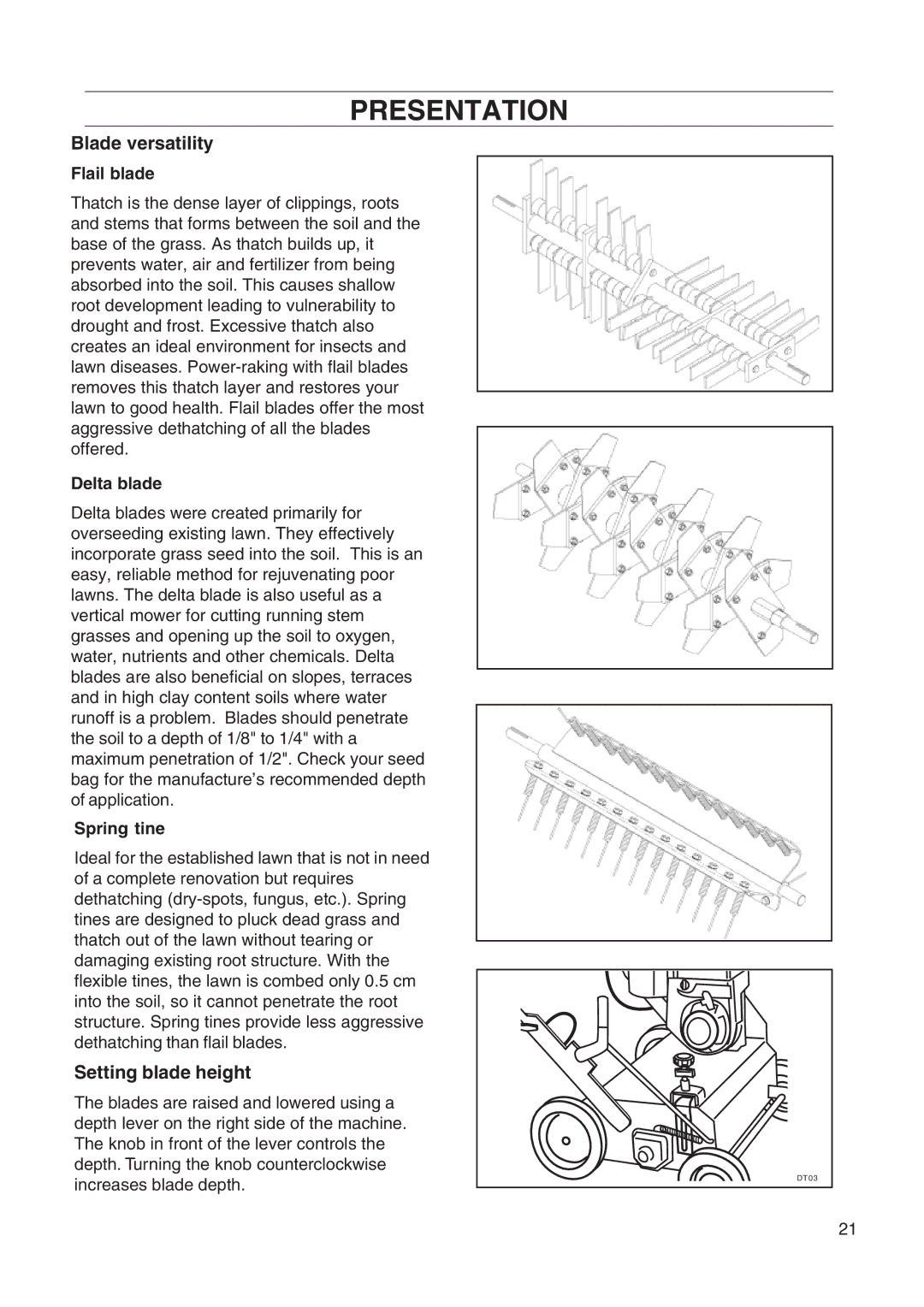
PRESENTATION
Blade versatility
Flail blade
Thatch is the dense layer of clippings, roots and stems that forms between the soil and the base of the grass. As thatch builds up, it prevents water, air and fertilizer from being absorbed into the soil. This causes shallow root development leading to vulnerability to drought and frost. Excessive thatch also creates an ideal environment for insects and lawn diseases.
Delta blade
Delta blades were created primarily for overseeding existing lawn. They effectively incorporate grass seed into the soil. This is an easy, reliable method for rejuvenating poor lawns. The delta blade is also useful as a vertical mower for cutting running stem grasses and opening up the soil to oxygen, water, nutrients and other chemicals. Delta blades are also beneficial on slopes, terraces and in high clay content soils where water runoff is a problem. Blades should penetrate the soil to a depth of 1/8" to 1/4" with a maximum penetration of 1/2". Check your seed bag for the manufacture’s recommended depth of application.
Spring tine
Ideal for the established lawn that is not in need of a complete renovation but requires dethatching
Setting blade height
The blades are raised and lowered using a depth lever on the right side of the machine. The knob in front of the lever controls the depth. Turning the knob counterclockwise increases blade depth.
DT03 |
21
